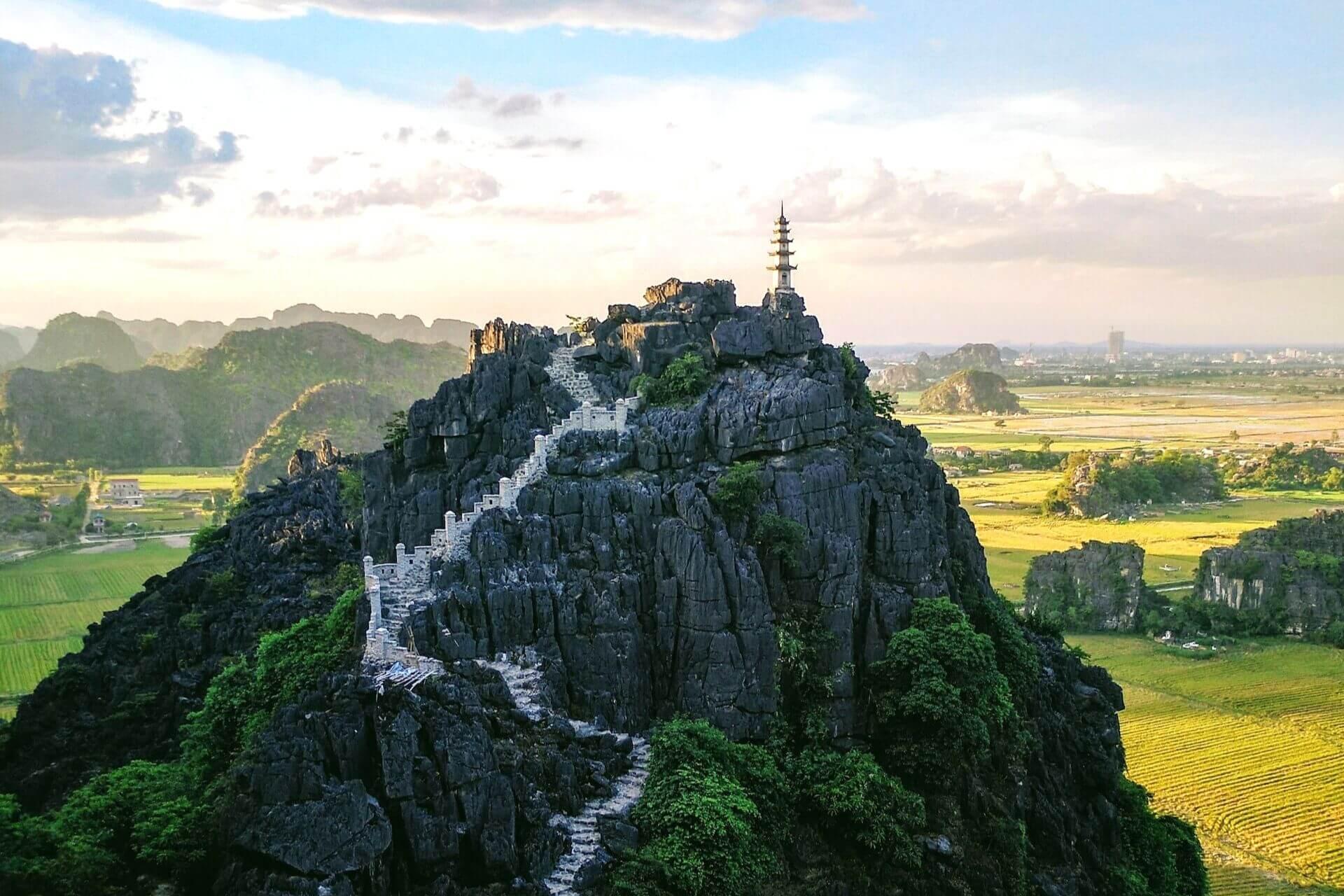Vietnam's incredibly diverse and interesting landscape stretches the entire length of the East Indian peninsula's east coast, a landscape that has been significantly affected not only by the Cold War but also by the previous communist government. For many years the country was divided into two states with completely different leadership. But for over 40 years Vietnam has been united, and despite some ongoing rivalry between the north and south of the country, it has become a great place to explore. Get ready for endless rice paddies, beautiful beaches, high mountains and vibrant cities full of scooters.
Where to begin?
The elongated silhouette of Vietnam gives a fairly clear guide to exploring the whole country. Most tourists either start in the north in the capital, Hanoi, and make their way south with a few detours, or, conversely, in Ho Chi Minh City (formerly Saigon) and head north. The ideal means of transport is by train, but if you don't have at least a month to travel, consider air travel. By the way, single entry tourist visas can be arranged online for just 30 days.
Another option is to choose one of the cities mentioned as a starting point and focus more on intensive exploration of the attractions in their surroundings. In the case of Hanoi, these are mainly the mountains rising up to 3,000 metres above sea level and the famous Ha Long Bay, while the Ho Chi Minh City area attracts visitors to the Mekong Delta and the famous Cu Chi tunnels.
NORTH VIETNAM
Smoldering old Hanoi
Hanoi, a city of more than three million, is not only the country's capital but also the cultural and economic centre of Vietnam. By far the most enticing part is the merchant's Old Quarter – a vibrant part of the city with a life of its own. Smiling grandmothers sell succulent vegetables of all kinds, young couples wash down fried treats with Vietnamese Bia Hoi beer on tap, and traditional Pho soup smells everywhere. The beautiful, much-neglected facades of the old houses breathe of the olden days and the streets still bear the names of the goods that have always been sold there. It is here that you will find Vietnam as you dreamed it.
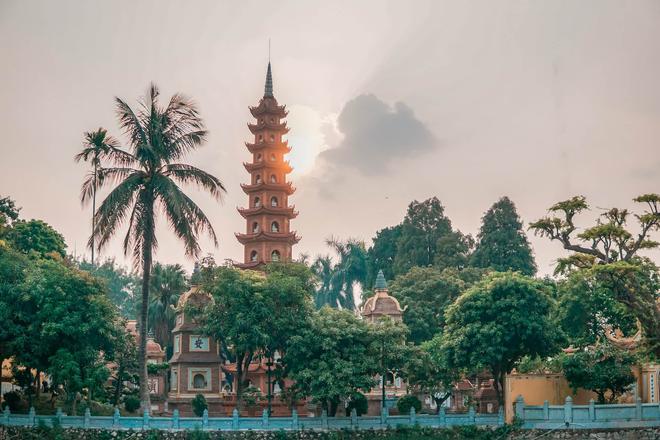
The main landmark is Hoan Kiem Lake, with its small island on which the magnificent Ngoc Son Temple stands, mirrored on the calm water. It is only accessible by a narrow red pedestrian bridge. At the bottom of the lake is said to be a magical turtle that helped the then emperor drive the Chinese out of the country in the 15th century. Near the Red Bridge, you'll find the Water Puppet Theatre, where you can admire the incredible art of Vietnamese puppeteers every night while singing traditional songs. The puppets' ingenious guiding system is underwater, making the characters look as if they are dancing on water.
In stark contrast to the Old Quarter is another Hanoi gem – the Ho Chi Minh Complex. At the megalomaniacal mausoleum, queue for a peek inside the room where the great Vietnamese leader's embalmed body is kept behind glass, or explore the palace and museum completely dedicated to the former president.
The peaceful Ha Long Bay
Over 2,000 rocky limestone islands jutting out of the azure blue calm sea surface hide small beaches, caves full of stalactites and boats navigating this breathtaking sea labyrinth. It is not for nothing that Ha Long Bay in northern Vietnam has been a UNESCO World Heritage Site since 2014 and is one of the seven modern natural wonders of the world.
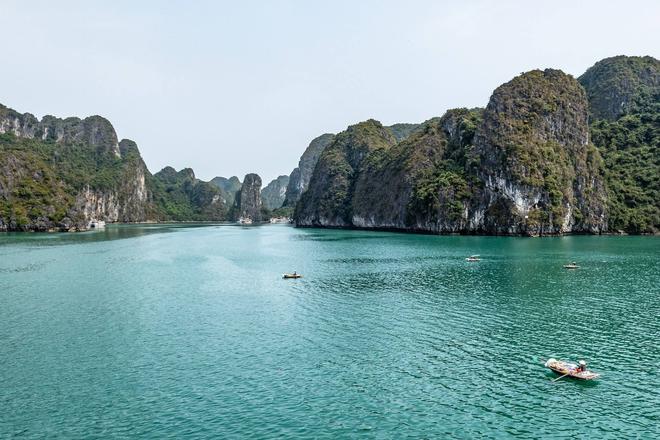
The gateway to this natural fairy tale is, unfortunately, the indescribably ugly Ha Long city (2.5 hours from Hanoi), of which it is often said that "if Ha Long Bay is heaven on earth, Ha Long city is hell". However, there's no need to linger here, just hop on one of the cruise ships right away. Most of them are nicely decorated and with traditional sails. They will take you around all the sights, and the price of the trips usually includes meals and overnight accommodation on the boat, which is definitely the best option. While you'll find quite nice hotel complexes on some of the islands, you'll only get the right atmosphere when watching the sunset on a quietly rocking boat moored right between the rocky towers. Excursions vary in length, but definitely don't stay less than two days.
For those of a more adventurous nature, we recommend opting for a kayak (available for rent on the large island of Cat Ba, for example) and exploring the islets under your own power. The area is also popular with sport climbers who practice deep water soloing (DWS), the safest climbing over sufficiently deep water. If you run out of strength, you can just take a nice bath.
Sa Pa surrounded by rice paddies
Inherent to Vietnam are high mountains filled with terraced rice paddies, wooden houses and smiling people from more than 50 different ethnic minorities. To mention a few, the Hmong, Dao and Tay. The tribes can be distinguished by elements of traditional dress. The mountain town of Sa Pa, located near the Chinese border, has lost much of its original charm in recent years due to the strong popularity of tourists, but it still serves as an easy and easily accessible starting point from Hanoi.
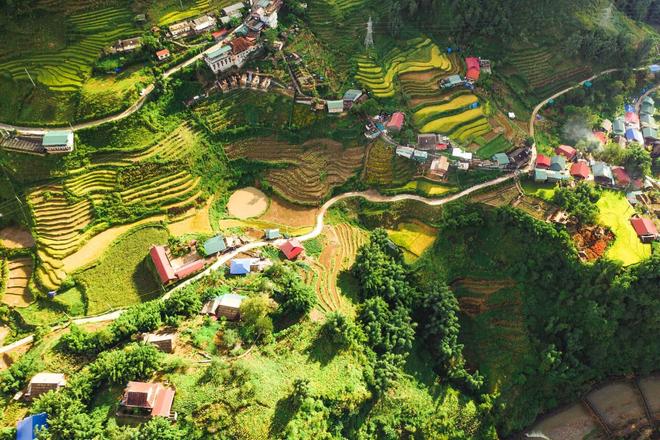
Generally, the further you move away from Sa Pa, the fewer tourists you'll meet and the more traditional village life you'll experience. The best option is to rent a scooter and head out into the remote valleys and villages on your own. Many agencies in town offer organised overnight trips, but the quality is poor and you can easily arrange your own homestay. If you want to see the whole area from above, take the cable car up Vietnam's highest mountain, Fansipan (3143m).
The lush greenery of the rice paddies contrasts sharply with the black and colourfully embroidered garments of the women. The steep slopes dropping to the rivers are interspersed with small empty roads surrounded by dense greenery. In contrast to this is the incredibly lively Sunday market in the town of Bac Ha, 80 kilometres northeast of Sa Pa, which you should definitely visit.
Equally interesting, but far less visited, is the area north of Ha Giang, which serves as a base for exploring the surrounding area. The landscape is very hilly and rugged and is best explored by rented motorbike or bicycle. The area is inhabited by several local tribes who build villages in inaccessible places. However, many locals in brightly coloured suits can also be found on the roads.
SOUTH VIETNAM
The modern world of Ho Chi Minh City
Saigon, as the city's original name goes, is overwhelming to any foreigner, especially with the number of scooters to be wary of at almost any minute. At first glance, the city is more modern, much more hectic and, above all, full of all sorts of traditional eateries and branches of large food chains. The main base for most tourists is the modern District 1, offering a plethora of accommodation, dining and souvenir shops. Unfortunately, there are also plenty of tourist traps lurking here, and locals are keen to take advantage of the presence of foreigners at any cost. District 3, on the other hand, is quite authentic, where the people are much more welcoming and the streets full of fragrant goodies have an almost family-like atmosphere.
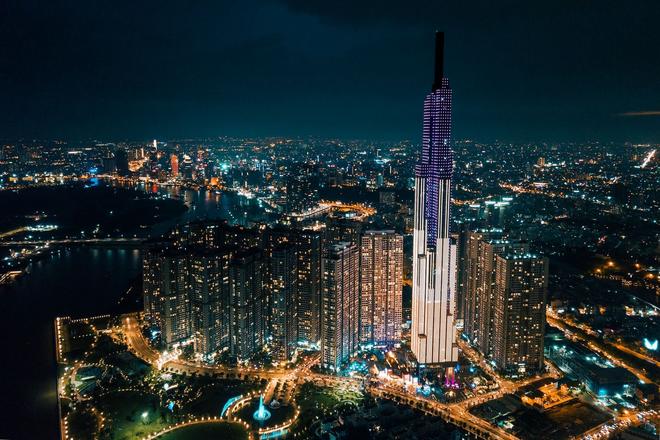
Those who want to learn more about the Vietnam War should definitely not miss the War Remnants Museum with its very shocking and gritty display of military equipment and especially stories illustrated with photos. While the museum may not put you to sleep, remember that its content is also quite politicised.
As Saigon was the capital of South Vietnam, you will also find the seat of the South Vietnamese president – Norodom Palace. But if you're short on time, feel free to skip it and head instead to Cholon Chinatown with its many traditional Chinese temples or one of the city's many pagodas. The Phuoc An Hoi Quan pagoda is wonderfully decorated, while the Jade Emperor Temple is a bit more fairytale-like.
Saigon area: Cu Chi, Mekong and Phu Quoc Island
The Cu Chi tunnels, which are easily accessible on a day trip, show how difficult the situation was during the Vietnam War. Although the system of 250 kilometres of underground tunnels lies deep in what was then South Vietnam, almost within sight of Saigon, the main American base, they were used by guerrillas on the side of Ho Chi Minh City. The tunnel system has three floors, with a hospital, kitchen and bedrooms. Moreover, without weapons or sufficient food, their inhabitants managed to resist the Americans throughout the war despite the widespread use of chemicals.
The lazily bobbing narrow boats loaded with all sorts of vegetables, the sleepy villages surrounded by water and the canals hidden in the palm trees. It's all part of the tranquil life of the Mekong Delta, which can also be pleasantly explored from Ho Chi Minh City. Either take a short boat trip or stay longer in the delta, rent a house over the water and sip traditional Vietnamese coffee with condensed milk on ice until you drop.
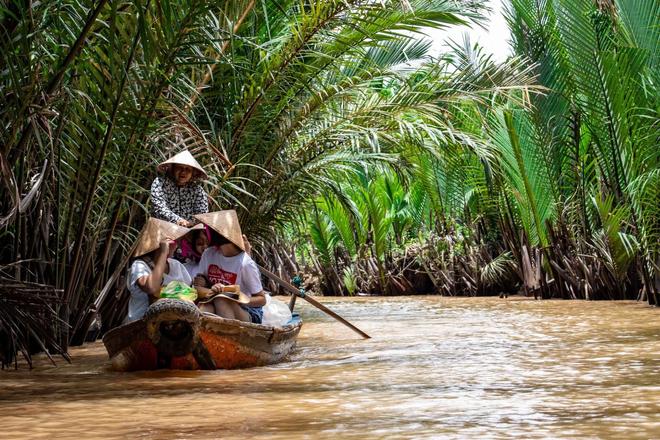
Also in the list of South Vietnamese gems, you must not miss the virgin island of Phu Quoc, which has already gained a lot of popularity among tourists, but thanks to the fact that 70% of its area is covered by a national park, it still retains its natural character. Beautiful white sandy beaches, a tropical rainforest full of wild waterfalls and great cuisine with plenty of fish and seafood. All this can be found on an island which is a day's bus and boat ride or an hour's plane ride from Ho Chi Minh City. Many claim that the atmosphere of this island is the most beautiful of all South Vietnam. The Salinda resort with its incredibly photogenic pool is considered one of the nicest luxury hotels. If you want something less ostentatious but more stylish, try the Valley Sen bungalows. They're further from the sea, but the peaceful location and pool with sunbeds right in the water make up for it.
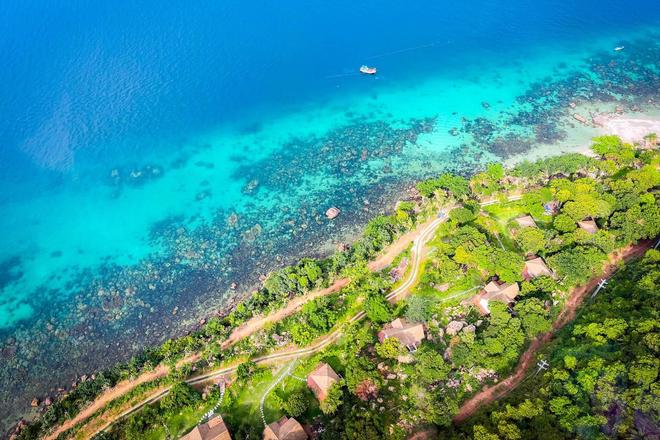
CENTRAL VIETNAM
Central Higlands
One of the less discovered areas is Vietnam's Central Highlands. This is best accessed from Ho Chi Minh City, but is definitely not a day trip. A typical starting point is the small town of Da Lat, which has gained popularity especially among locals as a destination suitable for holidays and honeymoons. This is why Da Lat has a bit of an amusement park character, which is not really appreciated by Western tourists.
Much more interesting is to rent a motorbike and go deeper into the secrets of the five Vietnamese districts that cover the highlands – Lam Dong, Dak Lak, Dak Nong, Kon Tum, and Gia Lai. In addition to flower greenhouses, tea and coffee plantations can be discovered. If you don't feel like going to the north of the country, here too you'll meet many ethnic minorities still living a fairly traditional way of life.
Hue and Hoi An: the pearls of central Vietnam
If you're visiting the central part of Vietnam, you shouldn't miss the former imperial city of Hue and the dreamy seaside town of Hoi An, both UNESCO World Heritage Sites. The two places are only 130 kilometres apart, yet they have completely different characters.
Hue had the misfortune of being relatively close to the 17th parallel, which defined the border between North and South Vietnam after World War II. The imperial residence became in no time a place of military clashes, which not only affected civilians but also many cultural and historical sites. The city was in a terrible state, but in recent years many monuments have been restored. The royal fortress or the Thien Mu pagoda are definitely worth a visit.
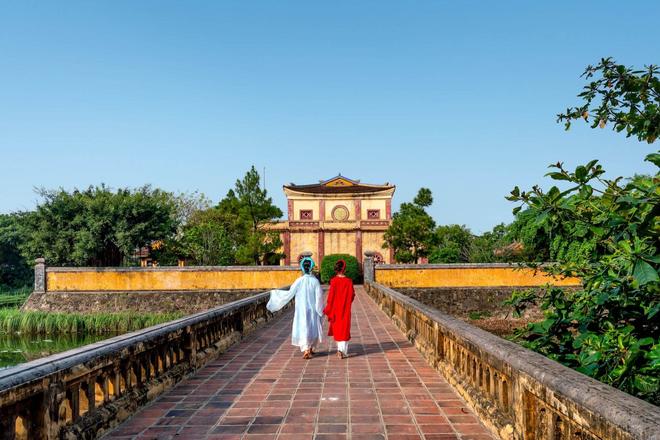
Hoi An is much more welcoming and picturesque. Since the 16th century, it has served as one of South Asia's most important ports and has attracted traders from all over the world, resulting in a mix of architectural styles. Streets paved with stone cobblestones are lined with small houses. Most of them are brick, but complemented by many wooden features. The yellow plaster is mottled from frequent floods and the wooden roofs are swaying with luminous lanterns of all sizes and colours. Most of the paths end on the banks of the Thu Bon River, which ripples between the fairy-tale buildings. Beautifully decorated boats anchor in it, some with floating restaurants, others truly mobile. Most popular today are the houses of ancient Japanese and Chinese traders. Many are still inhabited, but most are used as museums or souvenir shops.
